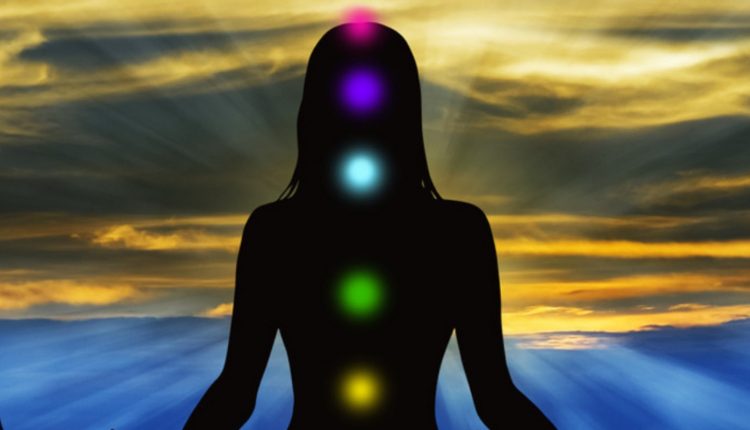What Are The 7 Chakras And What Do They Mean?
This will dramatically improve your emotional and physical well-being. The seven chakras are the root chakra, the sacral chakra, the solar plexus chakra, the heart chakra, the throat chakra, the third eye chakra and the crown chakra. We will explore the chakras in more depth, as well as tips on how to align them in the following spiritual articles. The seven chakras are the main energy centers of the body.
You’ve probably heard people talk about unlocking their chakras, which refers to the idea that when all of our chakras are open, energy can flow through them freely and there is harmony between the physical body, mind and spirit. In Sanskrit, the Root Chakra is known as the Mooladhara Chakra; this root defines our relationship with Mother Earth. It influences our passion, creativity, youth, vitality and, most importantly, our basic survival instincts. The root chakra is represented by the color red, which is also an indication of the need for logic, realistic thinking and order in our lives.
In addition, it is also a symbol of our physical strength, our sexuality and the flight and fight response that tends to activate within our body when we perceive danger. The Root Chakra is connected to the sense of smell within the body and is attached to the gland known as the gonads. The Sacral Chakra, or Swadhisthana Chakra, is a symbol of the elements of water present in the human body. It is represented by the color orange, which tends to impact our ability to be happy and cheerful, compassionate, creative and passionate.
It also influences our desires, sexuality and our reproductive functions, among others. The Solar Plexus Chakra, known as the Manipura Chakra in Sanskrit, roughly translates as “City of Jewels” and is considered one of the most powerful chakras that has profound influences on our personal power. The solar plexus chakra represents our personal abilities and powers, and influences our personal and professional success. This chakra is represented by the color yellow, which symbolizes this energy vortex and its connection with energy, fire and charge, among other powerful emotions.
When this fiery and powerful element is present in a harmonious balance, it allows us to be much more energetic, active, confident and communicative with a cheerful disposition that allows us to respect ourselves and others. The solar plexus chakra is connected to our sense of sight, and it is connected to the adrenal glands. The Heart Chakra, also known as the Anahata Chakra, is associated with the element of air within the body and has the deepest influence on our professional and personal relationships. This chakra is denoted by the color green, and if the heart chakra is weak and fragile, it can ruin our relationships with negative emotions, such as jealousy, envy, anger, mistrust and anger.
The Heart Chakra affects our sense of touch and is connected to several glands, including the lymphatic and thymus glands. The colors most frequently associated with the crown chakra are violet, purple and white. There are several reasons why this association is normally done. The most obvious thing is that these are colors that are sometimes assigned to things of a divine nature.
Since the crown chakra deals with the soul and all things divine, it only makes sense that these colors are associated with it. Sacral Chakra – Emotions and Intimacy. Chakra is a Sanskrit word that literally means wheel or circle, and originates from the ancient Indian yoga system and the philosophy of Tantra. From the base of the human’s spine to the top of the head, you can find seven chakras.
 They look like energy wheels that pass through the body. It is a crucial source of invisible energy in our bodies. Chakras keep us active, alive and vibrant every day. Therefore, on the back of our body, there is an arrangement of 7 colors of chakras.
They look like energy wheels that pass through the body. It is a crucial source of invisible energy in our bodies. Chakras keep us active, alive and vibrant every day. Therefore, on the back of our body, there is an arrangement of 7 colors of chakras.
They follow each other like the colors of the rainbow, including red, orange, yellow, green, blue, indigo and violet. As the emotions of the body change, these colors also change. Familiarize yourself with the location and color of each chakra in your physical body, establish your healing intention before meditation, and imagine each chakra expanding and opening. The colors of the 7 chakras correspond to the seven colors of the rainbow, and are called the white light spectrum.
The third eye, or Ajna chakra, is actually your sixth chakra and reportedly governs your intuition plus the ability to recognize and take advantage of it. In addition, the olfactory sense of the human body has a strong connection with the Muladhara Chakra. Even if you consider yourself one of these most skeptical individuals, you may be surprised to discover certain associations between physical and mental well-being and the seven chakras of the human body. Because this chakra is physically located in the head, blockages can manifest as headaches, vision or concentration problems, and hearing problems.
As you embark on the journey of activating and awakening your seven chakras, you will be able to enter the higher realms of existence and bring more life force energy to the lower dimensions. If you find that you are speaking above others or that you don’t speak at all, your throat chakra is likely to need some work. And if your lower chakras (root, sacrum, solar plexus, and heart) are out of balance, your third eye is likely to be too, which can cause you to act more critical, dismissive, and introverted. The flow of your energy is crucial to your positive well-being, and the seven chakras function as key valves that regulate it.
When most people have a sore throat because they have a cold or some other type of viral or bacterial infection, people with a blocked throat chakra often have a sore throat without being able to identify any external cause. Therefore, the heart chakra is the main category responsible for all kinds of relationships, including love and marriage.
Source: LotusGrid


Comments are closed.